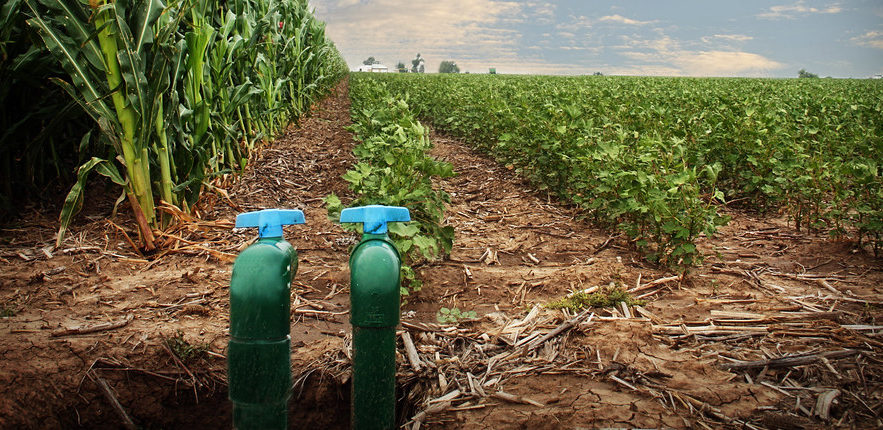Synthetic fertilizers are considered the largest human source of nitric oxide. Agricultural nitrous oxide emissions in the US account for nearly 80 percent of total human emissions of this gas. Slower release of nitrogen is the key to reducing NO2 emissions into the atmosphere. Research in California shows that micro-irrigation has reduced nitrous oxide emissions.
Conventional Irrigation
In conventional irrigation, a significant proportion of fertilizer remains in the soil because the plants are unable to absorb such amounts of nutrients. Soil microorganisms convert nitrogen into nitrous oxide, and then the gas is released into the atmosphere and remain there for more than 100 years.
Micro-irrigation
Micro-irrigation is targeted irrigation directly to the root system, allowing you to dispense the ideal daily amount of water and nutrients to individual crops, and saves up to 70% water. That is why crops absorb most of the nitrogen in this case. Reducing the use of synthetic fertilizers will reduce the emissions of nitrous oxide, one of the most significant greenhouse gases.

William Horwath, Professor of Soil Biogeochemistry at U.C. Davis, said:
“The ability to spoon-feed the crops when they need the nutrients, rather than top-loading them, has made a big difference. The plants are more competitive for the nitrogen with the microbial community, which leads to less nitrous oxide being emitted.”
What Else Can Reduce NO2 Emissions?
Use of sustained release fertilizers. However, gradual release cannot be applied to all crops. Some need a nitrogen supply immediately. The farmer must adapt to his portfolio.
Some fields, such as corn one, are fertilized in the fall, a few months before the planned planting. This is counterproductive as there is a risk of nitrogen being washed away by rain and snow melting. Instead, crop scientists at Cornell University recommend applying fertilizer as close as possible to the time of maximum crop growth.
Over 200 crop types are grown in California. Each plant has different requirements. A lot of data needs to be collected to determine which crops this system is suitable for. It is essential to maintain the yield for farmers using a conventional irrigation system.
Source and credit: Source and credit: https://civileats.com/2019/09/19/the-greenhouse-gas-no-ones-talking-about-nitrous-oxide-on-farms-explained/, flickr.com, wikipedia.org















